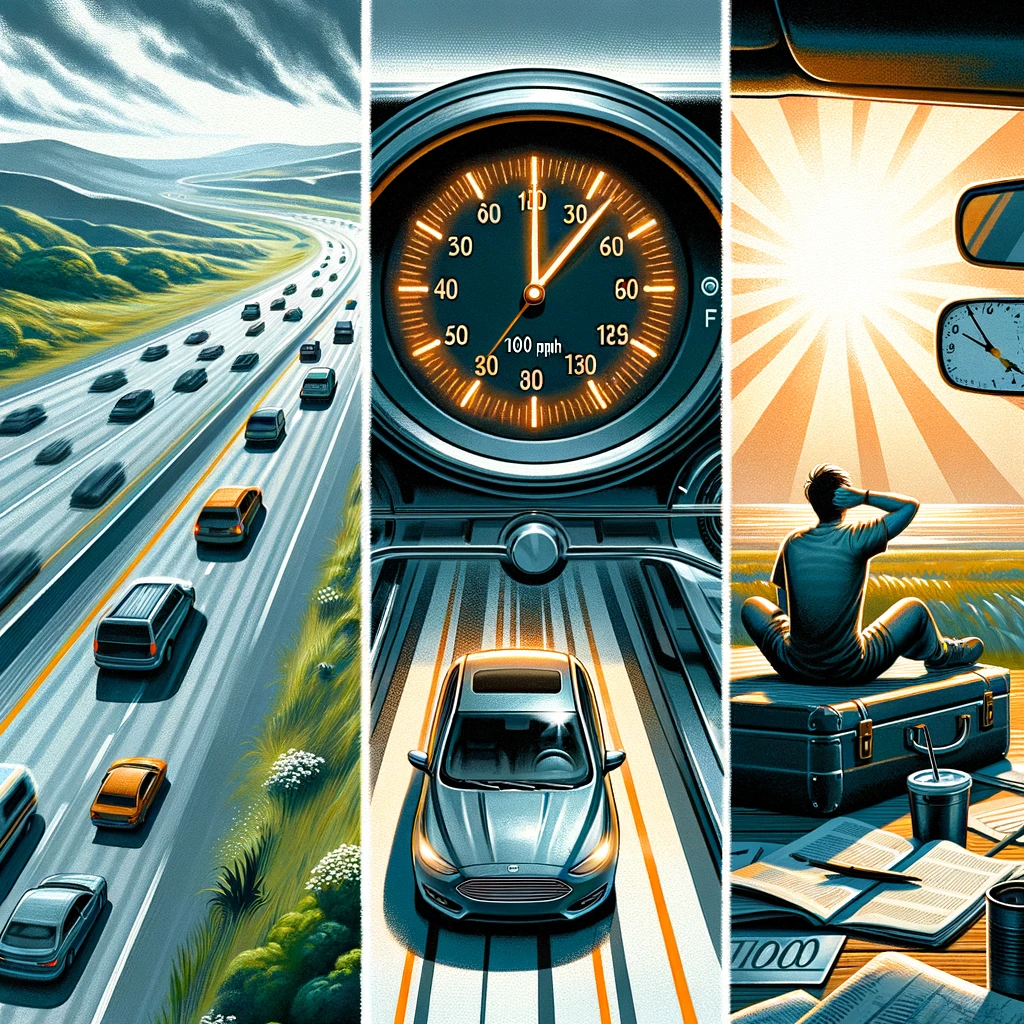To estimate the time it takes to drive 1,000 miles, you need to consider the average driving speed. For highway driving, an average speed of 60 to 70 miles per hour (mph) is reasonable. Using these speeds, you can calculate the approximate driving time.
- At 60 mph: 16.67 hours + 2 hours (breaks) = 18.67 hours
- At 70 mph: 14.29 hours + fewer breaks (since you’re driving for less time, you might only need about 7 breaks, adding roughly 1.75 hours) = 16.04 hours

Calculation at 60 mph:
When calculating the time it takes to drive 1,000 miles at an average speed of 60 mph, the basic formula for time is Distance divided by Speed. At 60 mph, every hour you travel covers 60 miles. Thus, for 1,000 miles:

This calculation assumes constant driving without any stops or changes in speed, which is impractical for a real-world journey. Long drives require breaks for various reasons including refueling, eating, resting, or simply stretching your legs to prevent fatigue and maintain concentration.
Considering safe driving practices, a 15-minute break every 2 hours is advised. For a 16.67-hour trip, this would result in approximately 8 breaks, adding around 2 hours to your journey:
The expanded driving time gives a more realistic expectation for your travel, accounting for the necessary rest and practicalities of a long journey. Such diligence ensures safer travel and helps prevent driving fatigue, which is crucial for both the driver’s and passengers’ well-being during a long trip.
Calculation at 70 mph:
When calculating the travel time for driving 1,000 miles at an average speed of 70 miles per hour (mph), the primary equation you use is Distance divided by Speed. Traveling at 70 mph means you cover 70 miles in one hour. Therefore, for 1,000 miles:

This figure is based on non-stop driving without accounting for any breaks or changes in speed, which isn’t feasible for such a lengthy trip. To maintain safe driving conditions, it’s recommended to take short breaks—around 15 minutes every two hours. During a 14.29-hour drive, you would likely need around 7 breaks, summing up to an additional 1.75 hours.

Adding breaks provides a more realistic and safer estimate for your journey, incorporating essential rest periods. These stops are crucial for refueling, eating, resting, and reducing driver fatigue, ultimately contributing to a safer and more comfortable driving experience.
Breaks:
When planning a long-distance drive, accounting for breaks is crucial for both safety and comfort. While the focus might be on reaching the destination efficiently, incorporating adequate rest is vital to prevent driver fatigue, which is a significant cause of road accidents.
Scheduled breaks every two hours, recommended for about 15 minutes each, allow the driver to rest, stretch, and refresh. These pauses can significantly reduce the risk of strain and increase alertness when back on the road. For a 1,000-mile journey calculated at highway speeds, these breaks become an integral part of travel time estimation.
Besides their safety value, breaks also offer opportunities to refuel the vehicle, enjoy meals, or simply appreciate the scenery. Integrating these stops into your travel plan ensures a more enjoyable and safer journey, turning necessary pauses into beneficial moments that enhance the overall driving experience.
The total estimated time to drive 1,000 miles, including breaks, would be around 18.67 hours at 60 mph or around 16.04 hours at 70 mph. Remember, this is an estimation; actual driving time can be influenced by factors like traffic, road conditions, and speed limits. Always plan for extra time, drive safely, and take breaks to avoid fatigue.


